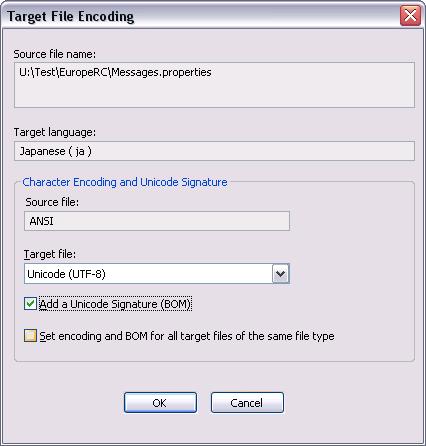The Target File Encoding dialog box is used to set the character encoding of a target file. The file type of the source file determines which character encodings are supported.
For text files, the following character encodings are typically supported:
· |
ANSI (MBCS) |
· |
UTF-8 (Unicode) |
· |
UTF-16 (Unicode) |
The encoding cannot be selected for binary files (e.g., EXE, DLL) and XML files.
BOM: In addition to the encoding it is also possible to specify whether the target file will include a byte order mark (BOM) at the beginning of the file. The default setting is to include a BOM.
|
Opening the Dialog Box |
The Target File Encoding dialog box is opened from the Target Files property page in the Source and Target Files dialog box.
|
Dialog Box Elements |
· |
Source file name Field The name of the source file from which the selected target file is generated. |
||||||||||
· |
Target language Field The language of the selected target file. |
||||||||||
· |
Character Encoding and Unicode Signature Group Box
|
